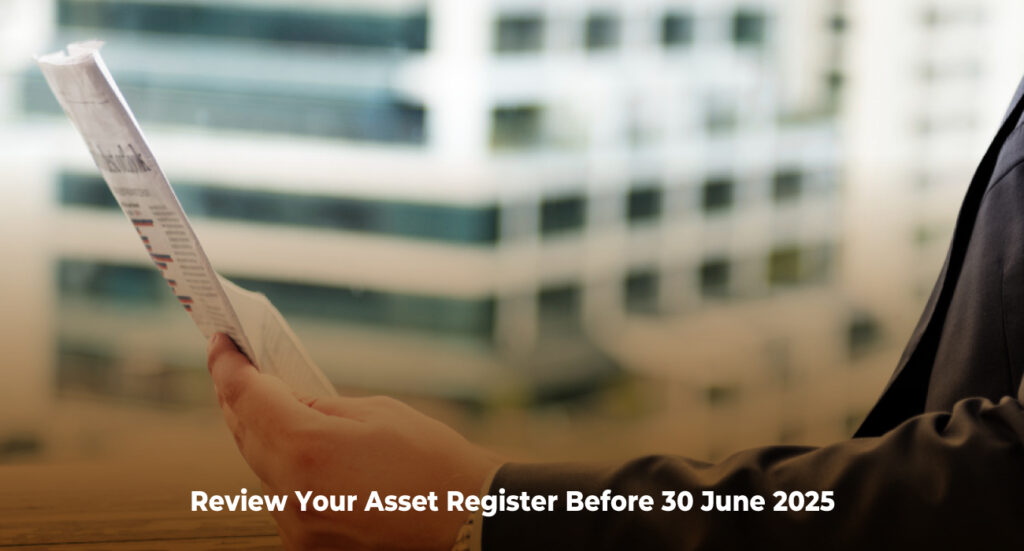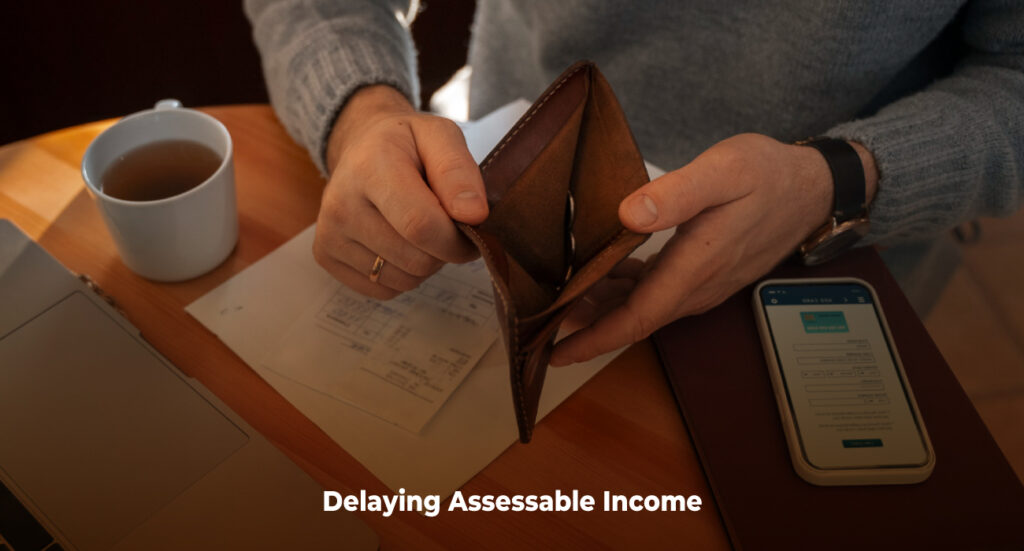2025 Tax Planning Guide for Business Owners
As we approach the end of the 2025 financial year, tax planning is once again front of mind for Australian small business owners. With the re-elected Labor government settling into power, the 2025 Federal Budget is expected to bring stability rather than sweeping tax reforms—offering business owners a relatively predictable landscape to work with.
May is a critical month. For many of our clients at Investax Group, it’s the final window to implement meaningful tax strategies that can make a real difference before 30 June. In this updated edition of our year-end tax planning series, we focus on what matters most to small business owners right now: protecting cash flow, optimising deductions, and avoiding last-minute mistakes.

Record Keeping
For any small business owner in 2025, maintaining accurate and complete records is more than just good practice—it’s a legal requirement and your first line of defence. With the government allocating millions of dollars in the 2025 Budget to boost ATO audit activity, this year is more critical than ever for keeping your business records in order.
Whether you’re starting, growing, restructuring, or closing your business, you’re legally required to keep comprehensive records for all tax, superannuation, and registration-related transactions. This includes every document that supports your small business’s income, expenses, and tax deductions.
Note – You must keep all your business records for five years.

Prepayments: A Smart Move for 2025
Prepaying certain expenses before 30 June can be a simple yet powerful tax planning tool for small business owners in 2025. The ATO allows deductions for prepayments only if they cover a period of 12 months or less and end before the next financial year. Here’s how you can use this to your advantage:
✅ Superannuation
Superannuation is deductible when paid, not when due. Although the June quarter super isn’t due until July, paying it before 30 June 2025 means you can claim the deduction in this year’s return. This applies whether you pay quarterly or monthly. Just ensure its cleared by your fund before EOFY to claim it.
✅ Rent
If your lease allows, prepaying up to 12 months of rent in June 2025 means you can claim the full amount in your 2025 return. This reduces taxable income now while locking in a major fixed cost for the year ahead.
✅ Loan Interest
Have a business loan with regular interest payments? You may be able to prepay up to 12 months of interest in advance—but not 24 months. This can bring forward a substantial deduction and reduce your 2025 taxable income. Ideal if your income is higher this year or you’re aiming for immediate tax relief.

Superannuation Contributions for Business Owners in 2025
If you’re self-employed—as a sole trader, a partner in a partnership, or running your small business through a trust—you’re not required to pay yourself super under the Superannuation Guarantee. However, you can still make personal deductible contributions to your super fund to reduce your 2025 taxable income and build long-term retirement savings.
For the 2025 financial year, eligible individuals can contribute up to $30,000 as concessional (pre-tax) contributions, which includes both employer and personal deductible contributions.
To claim a tax deduction, you must:
- Lodge a notice of intent to claim with your super fund, and
- Receive an acknowledgment before lodging your tax return.

Catch Up on Super with Carry-Forward Concessional Contributions
If you haven’t used the full amount of your concessional super contributions cap in previous years, you may be able to catch up thanks to the carry-forward rule. This allows eligible individuals with a total super balance under $500,000 to use unused concessional contribution caps from up to five previous financial years. It’s a smart way to boost your super and reduce your tax bill—especially useful in years when your business has strong cash flow or higher taxable income.

Claiming Bad Debts in 2025
If you run a small business and operate on an accrual basis, you may be able to claim a tax deduction for bad debts—income previously reported but now unrecoverable.
For example, if you included an invoice as income in your 2024 tax return, but in the 2025 financial year you determine the customer won’t pay, you can write it off and claim it as a deduction this year.
To be eligible:
- The debt must have genuinely gone bad in 2025 (i.e. there’s no reasonable chance of recovery).
- It must still exist—you can’t have forgiven, sold, or otherwise settled it.
- You must write it off in your books before 30 June 2025.
This strategy doesn’t apply to businesses on a cash basis, since income is only reported when received, and bad debts wouldn’t have been included in your assessable income in the first place.

Instant Asset Write-Off – Confirmed for 2025
As part of the 2024–25 Federal Budget, the government has extended the $20,000 instant asset write-off for small businesses until 30 June 2025—and this measure is now law.
If your business turnover is under $10 million, you can:
- Instantly deduct the full cost of eligible assets under $20,000 that are first used or installed between 1 July 2024 and 30 June 2025.
- Claim a deduction for cost additions under $20,000 made to previously written-off assets, if incurred within the same period.
The $20,000 cap applies per asset, meaning multiple assets can be written off. Assets over this limit go into the simplified depreciation pool, with 15% claimed in the first year and 30% each year after. If your pool balance is under $20,000 on 30 June 2025, it can also be written off in full.
This extension supports small business cash flow and simplifies year-end tax planning.
Note – To qualify, assets must be under $20,000 and installed by 30 June 2025.

Review Your Asset Register Before 30 June 2025
Keeping your asset register up to date is a key step in year-end tax planning. It helps track all business assets, including those scrapped or sold. Writing off the tax written-down value of obsolete assets can reduce your 2025 taxable income.
Be careful with assets previously claimed under instant asset write-off or temporary full expensing—many of these now have a nil tax value, even if they still show value in your accounting books.
✅ Asset Disposal & Trade-Ins
If you sell or trade an asset that was fully expensed, any proceeds may become fully taxable since the tax value is already zero. This applies even if your books still show a balance, so check for hidden tax consequences.
✅ Car Acquisition Limits
For cars, only a portion of the cost is depreciable. The car limit for 2025 is $69,674. Any cost above this isn’t claimable for depreciation.
✅ GST on Cars
The maximum GST credit for car purchases is capped at $6,334 (1/11 of $69,674). You can’t claim more, even if the car costs more—unless specific exceptions apply.

Delaying Assessable Income
If your small business has flexibility, deferring income until after 30 June 2025 can reduce your tax bill this year.
For accrual-based businesses, income is taxable once an invoice is issued—even in the last week of June. Delaying invoices until 1 July or later, where practical, can help lower your 2025 assessable income.
Selling assets? Be cautious. If you’ve fully expensed them under the instant asset write-off, the tax written-down value may be $0. Any amount received from a sale or trade-in becomes fully taxable income. Delaying disposal until next year can defer the tax impact.
Likewise, postponing the sale of business property or investments until after year-end defers any capital gains tax (CGT) to the 2026 financial year—helping you better manage cash flow and tax timing.

Stock Take – A Smart Move for Small Business
Accurate stock valuation is essential for correct tax reporting and improving your small business’s tax position. For tax purposes, stock can be valued at cost, market selling value, or replacement value—whichever gives the best outcome.
Review your valuation method annually. Don’t just use last year’s method—especially if you have obsolete or slow-moving stock that may justify a lower value.
A 30 June stocktake is good business practice. It helps identify write-down opportunities that can reduce taxable income and improve cash flow.

Repairs and Maintenance – Maximise Deductions by 30 June
If your small business relies on machinery or commercial premises, completing repairs and maintenance before 30 June 2025 can deliver valuable tax deductions.
This strategy is especially useful in industries like construction, manufacturing, agriculture, fishing, and dairy, where equipment upkeep is critical. Whether it’s servicing excavators, repairing irrigation systems, or maintaining factory machines—doing it before EOFY lets you claim the cost in this year’s tax return.
Timely repairs not only keep your business running smoothly but also reduce your taxable income and improve cash flow.

Bonus Tips for Small Business Owners
✅ Trust Resolutions – Due by 30 June 2025 – If your business operates through a discretionary trust, the trustee must document income distribution resolutions by 30 June. Failure to do so may result in the trust’s income being taxed at the highest marginal rate. Ensure your resolution is clear and names the beneficiaries to remain compliant and avoid unnecessary tax.
✅ Division 7A Loans – If your small business operates through a private company, review any shareholder or director loans by 30 June. Unpaid or undocumented loans may be treated as unfranked dividends under Division 7A—triggering unexpected tax bills. Ensure proper loan agreements are in place to stay compliant.
✅ Franking Account Review – Your company’s franking account shows how much tax-paid profit is available to distribute as franked dividends. Reviewing this before year-end allows you to plan withdrawals and issue dividends with franking credits—helping shareholders reduce their personal tax.
✅ R&D Tax Incentive – If your business has invested in innovation, new product development, or process improvements, you may be eligible for the R&D Tax Incentive. This government program offers refundable or non-refundable tax offsets for eligible R&D
✅ Single Touch Payroll (STP) Compliance – Ensure your payroll system is STP Phase 2 compliant. From reporting employee earnings and tax file numbers to superannuation and termination payments, the ATO now expects more detailed and timely reporting. Non-compliance may lead to penalties or delays.
✅ Choosing the Right Business Structure in 2025 -Your business structure plays a key role in tax efficiency, asset protection, and long-term planning. Companies offer a lower tax rate and safeguard personal assets, while trusts allow income splitting to reduce overall tax. With EOFY approaching, it’s a good time to review whether your current structure still suits your goals.
Conclusion
Tax planning isn’t just a year-end task—it’s a core part of building a stronger, more resilient small business. With only weeks left in the 2025 financial year, now is the time to act. The strategies in this guide can help you reduce tax, improve cash flow, and set your business up for long-term success.
At Investax Group, we tailor our advice to your unique goals—whether it’s maximising deductions, managing growth, or staying compliant. If your business could benefit from proactive, expert tax planning, we’re ready to help.
Get in touch today to book your consultation and take control of your 2025 tax outcome. Let’s make smart decisions now—for a stronger future.
General Advice Warning
The material on this page and on this website has been prepared for general information purposes only and not as specific advice to any particular person. Any advice contained on this page and on this website is General Advice and does not take into account any person’s particular investment objectives, financial situation and particular needs.
Before making an investment decision based on this advice you should consider, with or without the assistance of a securities adviser, whether it is appropriate to your particular investment needs, objectives and financial circumstances. In addition, the examples provided on this page and on this website are for illustrative purposes only.Although every effort has been made to verify the accuracy of the information contained on this page and on our website, Investax Group, its officers, representatives, employees and agents disclaim all liability [except for any liability which by law cannot be excluded), for any error, inaccuracy in, or omission from the information contained in this website or any loss or damage suffered by any person directly or indirectly through relying on this information.
Reference
ATO – Prepaid Expenses
ATO – Notice of Intent
ATO – Bad Debt
ATO – Car Threshold
ATO – Instant Asset Write Off





